- Home
- About Us
- Contact Us
- Site Map
- Affiliate Disclosure
- Privacy Policy
- Terms And Conditions
- Best Drone For Beginners 2021 : Top Beginner Drones
- Best Drones 2022 For Beginners : Top Beginner Drone
- Best Drones For Under 100 Dollars That Are Top Easy To Fly
- Best Cheap Drone For Photography : Camera Drones Budget
- What Is The Best Drone For 2022 And How Fast They Go
- Best Drone In The World To Use For Your First Time
- Best Drones 2022 With Camera : Which One Is The Best Drone
- Mavic Drone : The Most Marvelous Epic Controlled Flight System
- Drone Pilot License : The Best Way To Show Off Your Flight Skill
- Sky Rider Drone: Wi-fi Quadcopter With Foldable Black Camera
- Drone For Kids : The Best Toy To Focus On STEM Technology
- Propel Drone HD Camera Quadcopter And Star Wars
- Mini Drone With Camera : What Is The Best One And Why It Is Good
- Drones Dji : The Most Popular Consumer Drone On The Market Today
- Long Range Drone : How Far Can It Go And At What Rate Of Speed
- Micro Drone : The Smallest Toy With The Biggest Flight Fun
- Flying Spinner Mini Drone : The Best Flying Machine For Home Use
- Drones That Follow You : Is This An Invasion of Privacy or Not ?
- Drone Vivitar : A Magnificent Piece Of Equipment To Learn To Fly
- Drone Repair Near Me : Where Can I Find Reliable Parts And Stuff
- Drone Photography Near Me That Can Capture The Scenic View
- Drone Quadcopter : The Best Aerial Fly Machine That You Can Own
- Drone Light Show : A Spectacular Array Of Lights, Camera, Action
- Drone Holy Stone : The Most Quality Flying Device Anyone Can Use
- Sky Quad Drone Reviews Is It A Scam Or Legit Revealed
- Drone Fishing : When A Man Has A Rod, Boat, And Nothing But Time
- Faa Drone Registration : Feel Free To Fly But Follow The Rules
- Remote Control Drone : RC Drones With Fpv Controllers
- Hand Controlled Drone : Guiding Your Flight At Your Finger Tips
- Best Video Drones For Beginners | Features A Beginner Drone
- The Best Drone To Buy : Drones 2023 For Beginners
- Dgi Drone
- Best Drone For Night Photography
- Best Drone For The Money
- Best Drone For Teenager
- Best Drone For Under 200
- Best Drone For Under 500
- Best Drone For Video
- Best Drone In The Market
- Best Drone Under 1000
- Best Drones For Travel
- Bird Drone
- Black Hornet Drone
- Deerc Drone
- DJI Drones For Sale
- Best Beginner Drone With Camera : Are You New To Flying
- Best Beginner Drone For Me And How Much Will It Cost
- Battery For A Drone : Benefits, Advantages, And Features
- Best Camera Drone For Professional And Entertainment Purposes
- Best Cheap Drone In The Market That Will Not Cost An Arm and Leg
- Dji Fpv Drone
- Dji Mavic 3 Drone
- Drone Dj
- Best Drone Camera For First Time Users And Experienced Users
- What Are The Best Drones For Video Drone Camera
- Home
- Best Drones 2022 For Beginners : Top Beginner Drone
- Best Brand for Drone
- Best Drones 2022 With Camera : Which One Is The Best Drone
- Best Cheap Drone For Photography : Camera Drones Budget
- Drones That Follow You : Is This An Invasion of Privacy or Not ?
Potensic ATOM 3-Axis Gimbal 4K GPS Drone, Under 249g, 96 Mins Flight, Max 6KM Transmission
Drones That Follow You And Do They Present A Real Problem ?
Also known as follow-me drones or personal tracking drones, are unmanned aerial vehicles equipped with advanced tracking and autonomous flight capabilities. These drones are designed to track and follow a designated target, typically a person or an object, while maintaining a certain distance and capturing footage or performing other tasks.
Here's a detailed explanation of how these drones work:

1. Tracking Technology: Follow-me drones utilize various tracking technologies to locate and follow the target. The most common tracking methods include:
• GPS (Global Positioning System): Drones equipped with GPS receivers can track the target's location based on the signals received from satellites. The drone's flight controller uses this information to calculate the target's position and adjusts its own flight path accordingly.

• Visual Tracking: Some drones employ computer vision algorithms and onboard cameras to visually track the target. The camera captures the target's image or uses specific markers or patterns for recognition. The drone's software analyzes the images in real-time, determines the target's location, and directs the drone to follow it.
• Wearable Devices: In certain cases, the target may wear a device that emits a signal, such as a Bluetooth beacon or a dedicated tracking module. The drone's receiver can detect this signal and use it to track the target's movement.
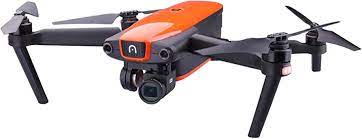
2. Flight Control and Autonomy: Follow-me drones have built-in flight controllers that process the tracking data and control the drone's flight. These controllers make use of sophisticated algorithms to ensure stable flight and accurate tracking.
The flight controller also maintains a safe distance from the target, avoiding obstacles and adjusting altitude, speed, and orientation as needed.
3. Communication and Connectivity: To establish a connection between the drone and the target, follow-me drones often rely on wireless communication methods. This allows the drone to receive tracking information and transmit video or other data back to the user or a designated device. Common connectivity options include Wi-Fi, Bluetooth, or dedicated radio frequency links.
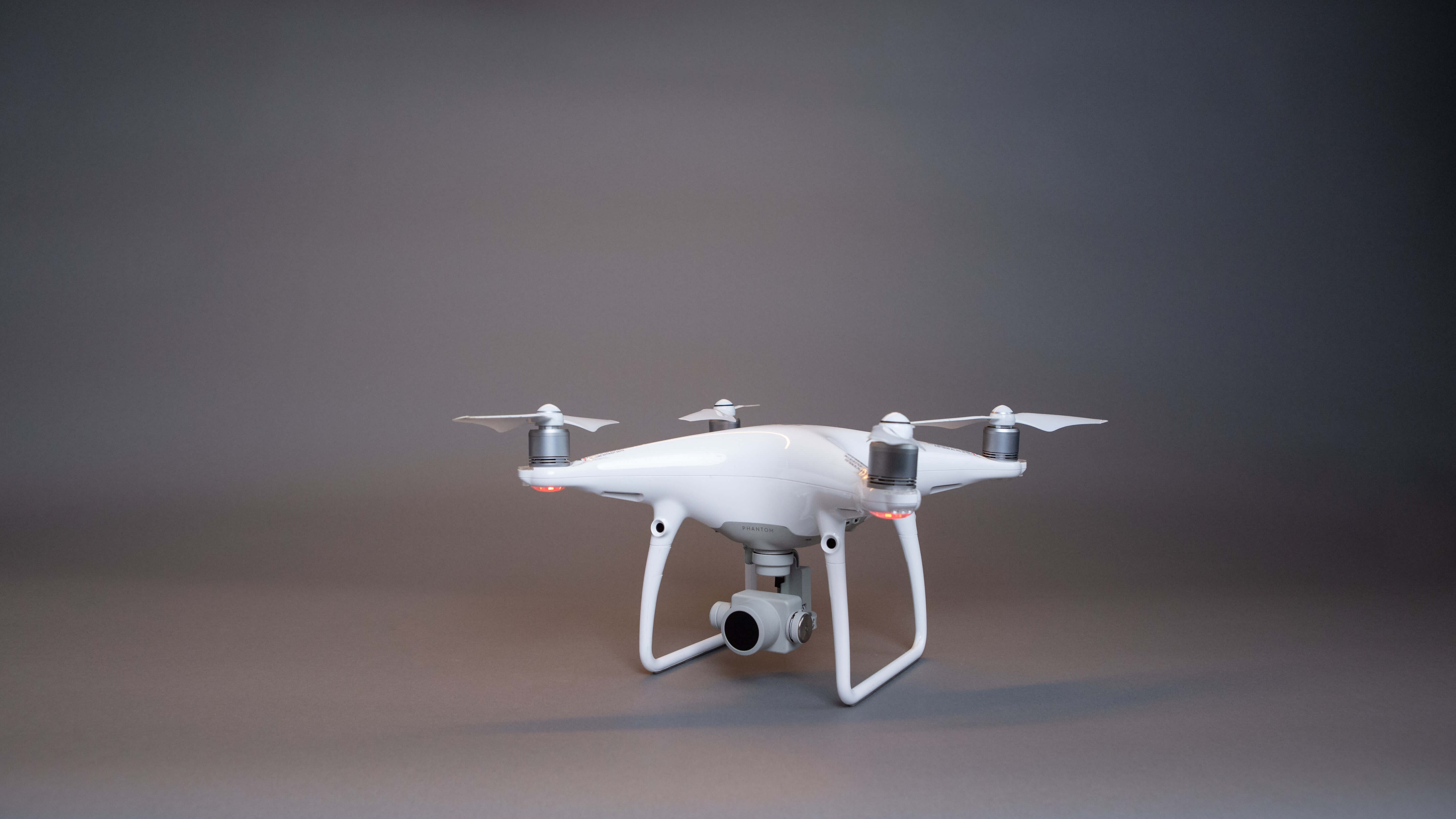
4. Intelligent Flight Modes: Follow-me drones usually offer different intelligent flight modes to suit specific tracking requirements. These modes may include:
• Circle Mode: The drone orbits around the target in a circular path, capturing footage from various angles.

• Hover Mode: The drone maintains a fixed position in the air while tracking the target's movements.
• Waypoint Mode: Users can define a specific path or set of waypoints for the drone to follow. The drone will autonomously navigate along the pre-programmed route while tracking the target.
• Object Tracking Mode: Instead of tracking a person, the drone focuses on a specific object, such as a vehicle or an animal, and follows it accordingly.
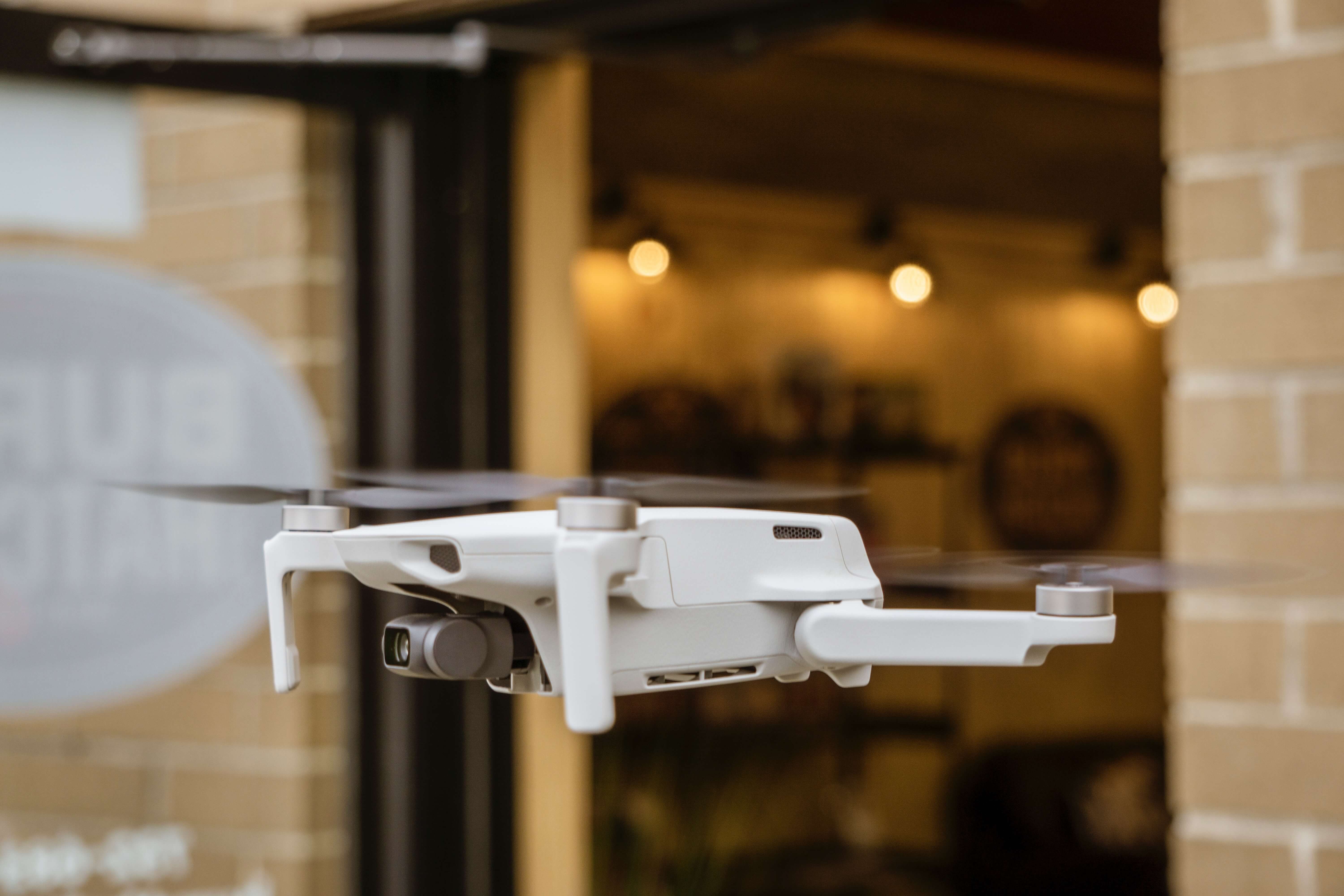
• Active Track Mode: This mode employs advanced algorithms to dynamically track the target, even when it moves erratically or changes speed.
5. Additional Features: Follow-me drones often come with additional features to enhance their functionality and user experience. These may include:

• Collision Avoidance: Some drones incorporate obstacle avoidance sensors to detect and avoid potential collisions with objects in their flight path.
• Return-to-Home: If the drone loses connection with the target or the user, or if the battery level becomes critically low, it automatically returns to its takeoff point or a designated home location.

• Autonomous Landing: Once the tracking session is complete or upon command, the drone can autonomously land safely, ensuring a controlled and secure landing.
• Camera and Gimbal Stabilization: Follow-me drones often have built-in cameras or the ability to mount cameras. They may offer features like gimbal stabilization to ensure smooth and steady footage.
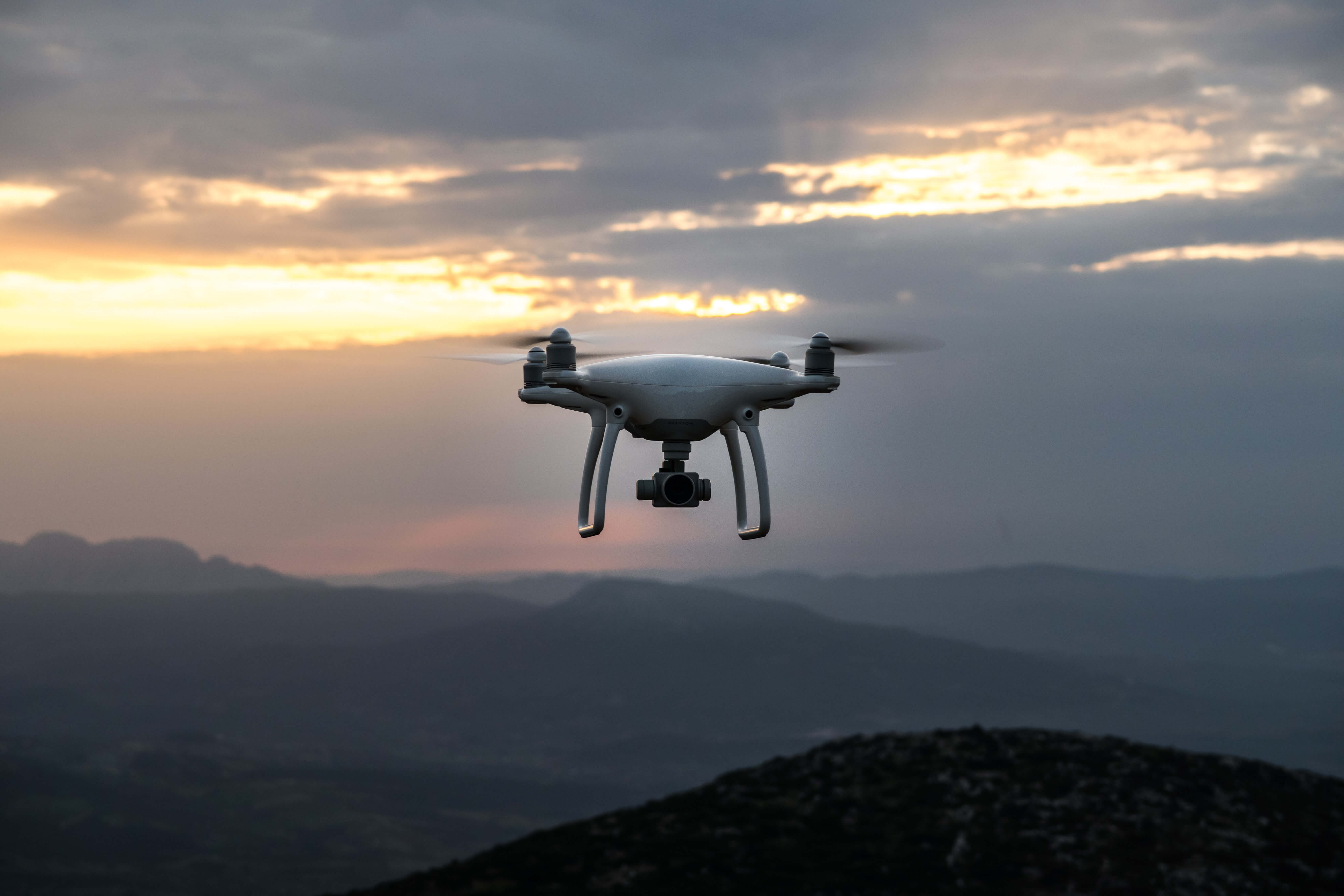
It's important to note that the specific capabilities and features of follow-me drones can vary depending on the model and manufacturer. Some drones are designed for recreational use, while others cater to professional applications such as aerial photography
Drones That Follow You : Are There Drones That Automatically Follow You ?
Yes, there are drones that are designed to automatically follow you without the need for manual control or input. These drones utilize advanced tracking technology and autonomous flight capabilities to track and follow a designated target, such as a person, vehicle, or object. Here's a detailed explanation of how these drones work:

1. Tracking Technology: Automatic follow-me drones employ various tracking technologies to locate and track the target. These may include:
• Visual Tracking: Drones equipped with cameras and computer vision algorithms can visually detect and track the target. The onboard camera captures the target's image or recognizes specific markers or patterns for tracking. The drone's software analyzes the visual data in real-time, determines the target's position, and adjusts its flight path accordingly.

• GPS (Global Positioning System): Drones with GPS receivers can track the target's location based on satellite signals. The drone's flight controller uses the GPS data to calculate the target's position and autonomously follows it.
• Sensor Fusion: Some drones combine multiple sensors, such as GPS, accelerometers, gyroscopes, and optical flow sensors, to improve tracking accuracy. Sensor fusion techniques integrate data from these sensors to provide a more reliable and precise tracking capability.
2. Flight Control and Autonomy: Automatic follow-me drones have sophisticated flight controllers and autonomy systems that process the tracking data and control the drone's flight. These systems employ advanced algorithms to ensure stable flight and accurate tracking. The flight controller continuously adjusts the drone's altitude, speed, and orientation to maintain a safe distance from the target and follow it smoothly.
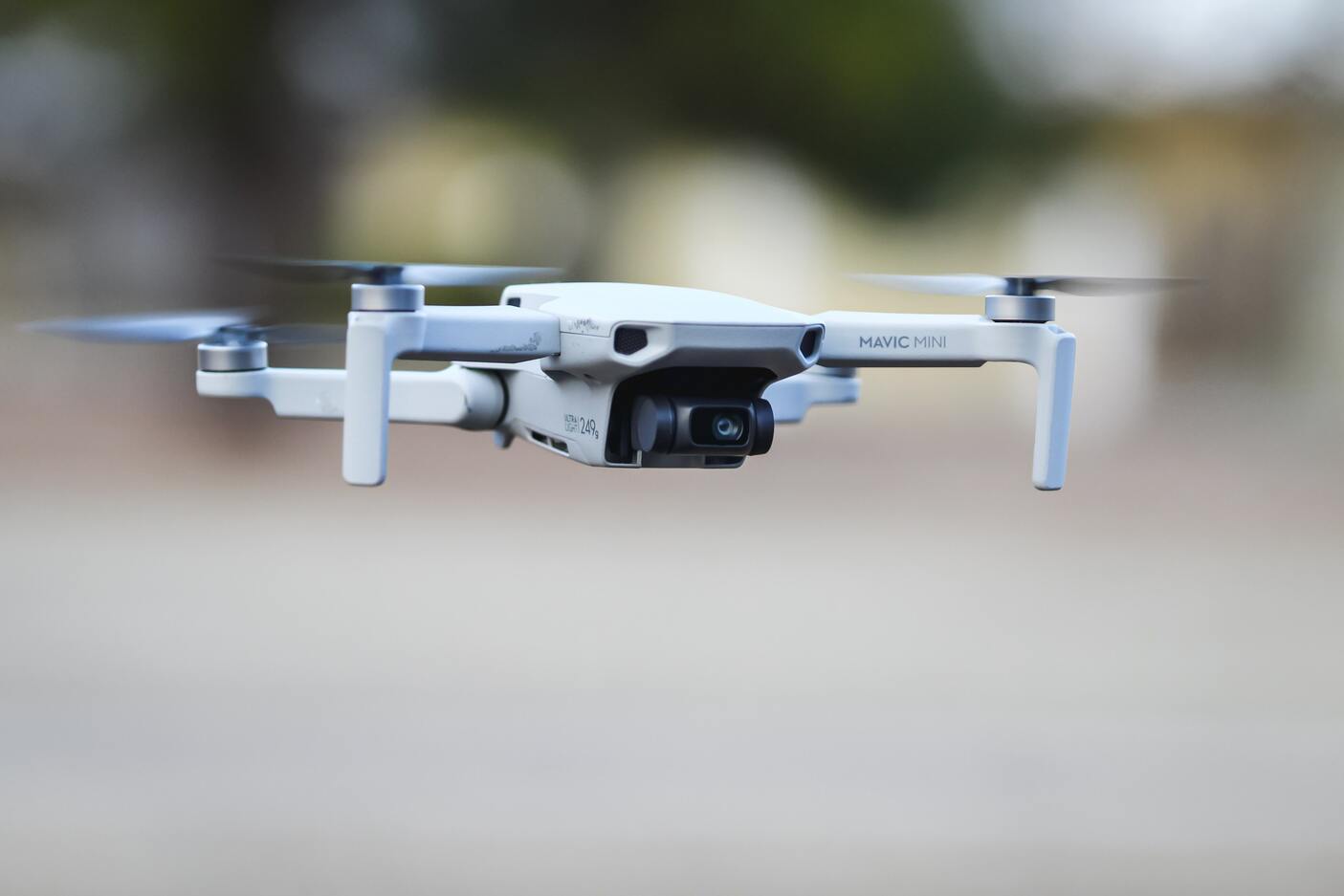
3. Artificial Intelligence (AI) and Machine Learning: Many automatic follow-me drones utilize AI and machine learning algorithms to enhance their tracking capabilities. These algorithms can learn and adapt to the target's behavior, allowing the drone to predict movements, anticipate changes in direction or speed, and respond accordingly. This enables smoother and more accurate tracking even in complex scenarios.
4. Communication and Connectivity: Automatic follow-me drones often establish a wireless connection with the target or a companion device for tracking and control purposes. This connection allows the drone to receive tracking information in real-time and adjust its flight path accordingly. Common communication methods include Wi-Fi, Bluetooth, or dedicated radio frequency links.
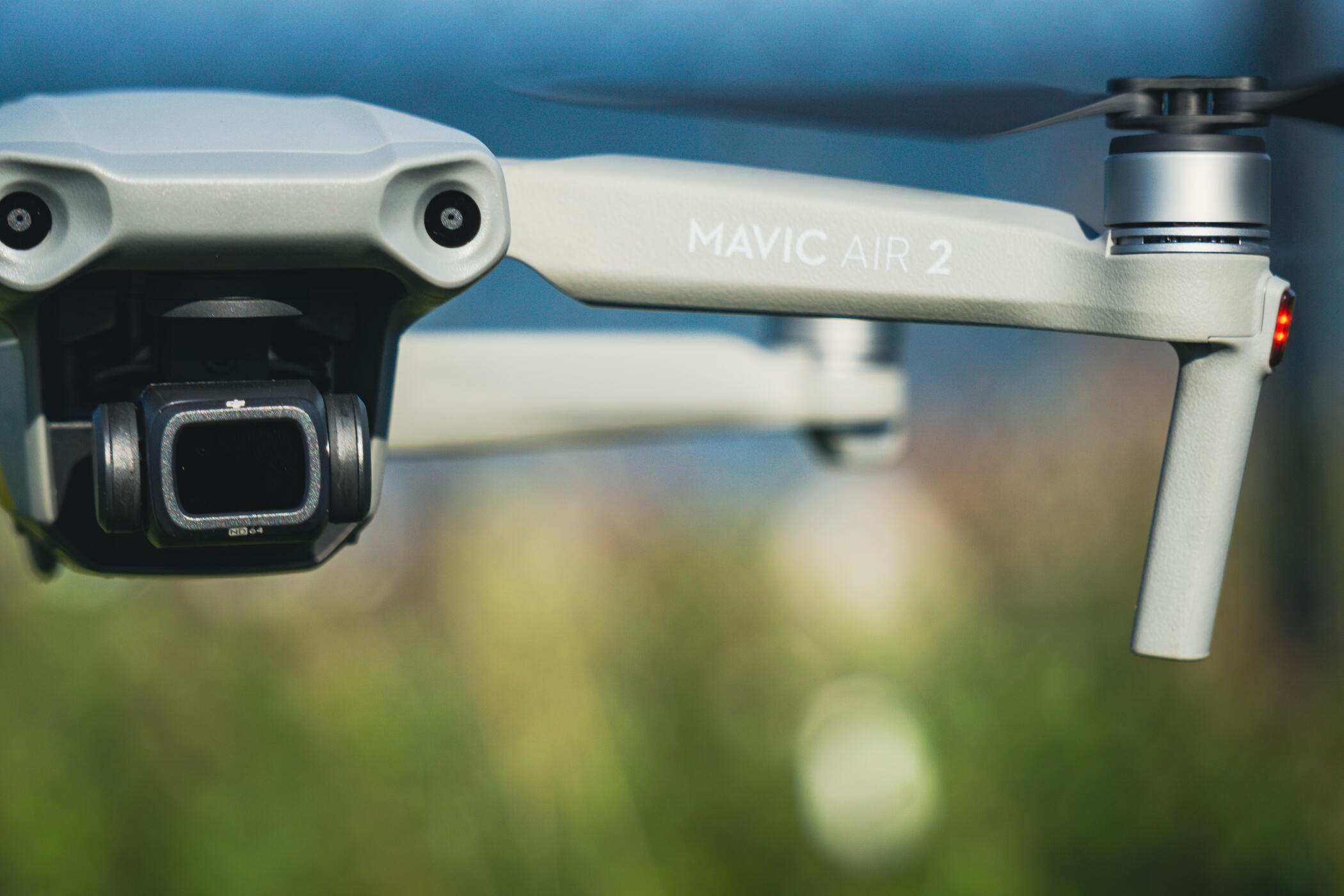
5. Intelligent Flight Modes: Automatic follow-me drones typically offer various intelligent flight modes to cater to different tracking requirements. These modes may include:
• Active Track Mode: In this mode, the drone actively tracks and follows the target, adjusting its flight parameters as necessary. It can adapt to changes in the target's speed, direction, or behavior.
• Gesture Control: Some drones have gesture recognition capabilities, allowing users to control the drone's movements using hand gestures or predefined gestures. This enables hands-free operation and intuitive control.
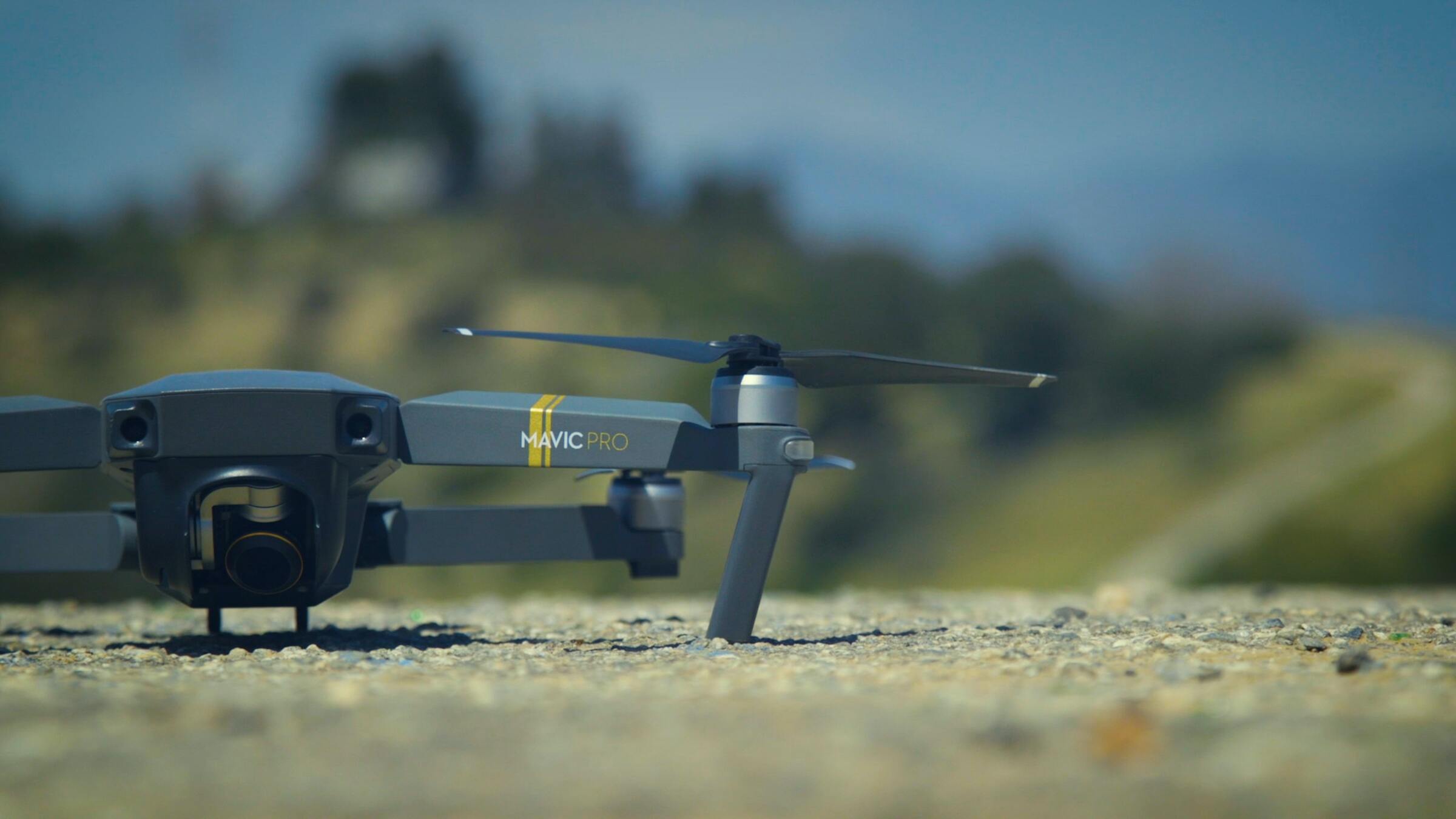
• Follow Orbit Mode: The drone orbits around the target in a circular path while maintaining a fixed distance and capturing footage from different angles.
• Follow Snap Mode: In this mode, the drone captures short video clips or photos of the target at specific intervals or when triggered by a gesture or command.

6. Safety Features: Automatic follow-me drones often incorporate safety features to prevent accidents and ensure user and drone safety. These may include:
• Obstacle Avoidance: Drones equipped with obstacle detection sensors can identify and avoid obstacles in their flight path. They may automatically adjust their trajectory or come to a stop to prevent collisions.

• Return-to-Home: If the drone loses connection with the target or the user, or if the battery level becomes critically low, it can automatically return to its takeoff point or a designated home location to ensure a safe landing.
• Geofencing: Geofencing technology allows users to define virtual boundaries within which the drone can operate. If the drone approaches or exceeds these boundaries, it can trigger an alert or automatically adjust

Which Drone Can Follow Me ?
There are several drones available on the market that are designed to follow and track a designated target, such as a person. Here are some popular options:
1. DJI Mavic Air 2: The DJI Mavic Air 2 is a compact and portable drone equipped with advanced tracking capabilities. It features ActiveTrack 3.0, which uses visual recognition algorithms to track and follow subjects. The drone can detect and avoid obstacles, has a maximum flight time of up to 34 minutes, and can capture 4K video footage.
2. Skydio 2: The Skydio 2 is an autonomous drone that excels in tracking and following capabilities. It utilizes six 4K cameras and AI algorithms for real-time tracking and obstacle avoidance. The drone can track and follow subjects in complex environments, reaching speeds of up to 36 mph.

3. Autel Robotics EVO II: The Autel Robotics EVO II is a professional-grade drone with advanced tracking features. It offers a variety of tracking modes, including Dynamic Track, Tripod Track, Orbit, and Parallel Track. The drone has a 48-megapixel camera capable of capturing 8K video and a flight time of up to 40 minutes.
4. PowerVision PowerEgg X: The PowerVision PowerEgg X is a versatile drone that can switch between aerial photography and handheld gimbal modes. It features an AI tracking algorithm that can track and follow subjects in real-time. The drone has a 4K camera and a waterproof design, allowing it to capture footage in various environments.

5. Yuneec Typhoon H Pro: The Yuneec Typhoon H Pro is a hexacopter drone that offers advanced tracking capabilities. It features Intel RealSense technology for obstacle avoidance and has a range of intelligent flight modes, including Follow Me, Orbit, Curve Cable Cam, and Journey. The drone has a 4K camera and a flight time of up to 25 minutes.
These are just a few examples of drones that offer follow-me capabilities. It's important to research and compare different models based on your specific needs, such as flight time, camera quality, tracking accuracy, and budget, to find the one that best suits your requirements.

Do All Drones Have Trackers ?
No, not all drones have built-in trackers. The inclusion of a tracker in a drone depends on the specific model and its intended purpose. Here are some points to consider:
1. Consumer Drones: Many consumer drones do not come with integrated trackers. These drones are typically designed for recreational use, aerial photography, or racing, and may not prioritize advanced tracking capabilities. However, some consumer drones may offer basic tracking features, such as following a GPS signal from a connected smartphone or controller.
2. Professional Drones: Professional-grade drones, especially those designed for aerial photography and videography, often have advanced tracking capabilities. These drones may utilize visual tracking, GPS, or sensor fusion technologies to track and follow subjects accurately. They may also incorporate additional features like obstacle avoidance and intelligent flight modes.

3. Autonomous Drones: Autonomous drones, designed for specific applications like mapping, surveying, or inspection, often have tracking capabilities. These drones can follow predetermined flight paths or waypoints without the need for manual control. However, their tracking functionality is primarily focused on maintaining a specific flight route rather than following a moving target.
4. Customized or Modified Drones: It's possible to modify or customize drones to add tracking capabilities. This may involve integrating additional hardware, such as cameras, GPS modules, or sensors, and developing or utilizing software algorithms to track and follow targets. Such modifications are often carried out by professional drone enthusiasts or commercial drone operators to meet specific tracking requirements.
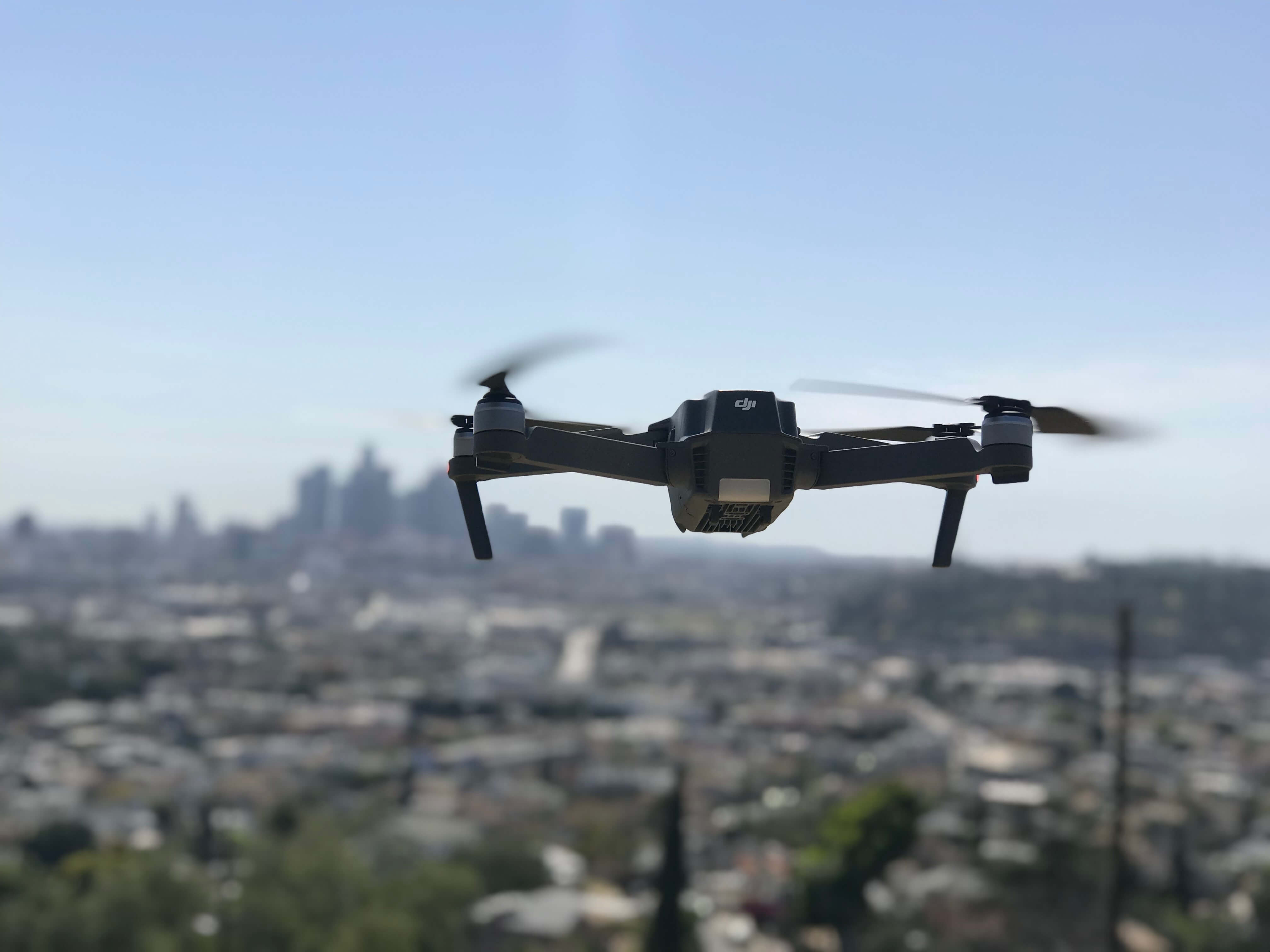
In summary, while many consumer drones do not have built-in trackers, professional-grade drones and specialized autonomous drones often incorporate advanced tracking technologies. It's important to research and select a drone model that aligns with your specific tracking needs and intended use.
How Do You Detect A Drone Spying On You ?
Detecting a drone that may be spying on you can be challenging, as drones can be small, quiet, and easily maneuverable. However, there are several methods you can use to increase your chances of detecting a drone. Here are some techniques to consider:
1. Visual Observation: Keep a vigilant eye on the sky and look for any unusual or suspicious flying objects. Drones can appear as small, remotely controlled aircraft or quadcopters. Look for hovering or slow-flying objects that don't resemble birds or airplanes.

2. Listen for Drone Sounds: Drones emit a distinct buzzing or whirring sound, especially when in close proximity. If you hear an unfamiliar sound that seems to be coming from above, it may indicate the presence of a nearby drone. However, note that some drones, especially those equipped with quiet electric motors, may produce minimal noise.
3. Look for LED Lights: Drones often have LED lights that can help with orientation and visibility during nighttime flights. Keep an eye out for blinking or colored lights that do not correspond to typical aircraft navigation lights.
4. Use Smartphone Apps: There are smartphone apps available that can help detect and identify nearby drones. These apps utilize radio frequency (RF) scanning to detect signals emitted by drones and provide an indication of their presence. They can help detect drones that are using radio control or video transmission frequencies.

5. Radio Frequency (RF) Detection: Specialized RF detection equipment can be used to scan for signals emitted by drones. These devices can detect the radio control signals or video transmission frequencies used by drones. However, they require technical knowledge and expertise to operate effectively.
6. Wi-Fi Network Scanning: Drones equipped with wireless video transmission systems may establish a Wi-Fi connection to stream live video or receive control commands. You can use Wi-Fi network scanning tools to check for any unfamiliar or unauthorized devices connected to your Wi-Fi network.
7. Radar Systems: Advanced radar systems are capable of detecting and tracking drones. These systems use radio waves to detect the presence of objects in the airspace, including drones. However, radar systems are typically expensive and more commonly used by authorities or critical infrastructure facilities rather than individuals.

8. Drone Detection Systems: There are specialized drone detection systems available that combine multiple technologies such as radar, RF scanning, and optical sensors to detect and track drones. These systems are designed to provide comprehensive drone detection and alert capabilities, but they are typically used by organizations and security professionals.
It's important to note that while these methods can increase your chances of detecting a drone, they may not guarantee 100% accuracy. Some drones may be designed to be stealthy or may employ countermeasures to avoid detection. If you suspect a drone is spying on you, it's advisable to consult local authorities or experts who can further investigate the situation.

Can Police Use Drones To Watch You ?
Yes, law enforcement agencies can use drones for surveillance purposes, subject to specific regulations and legal requirements in their jurisdiction. The use of drones by police for surveillance can serve various purposes, including public safety, crime prevention, search and rescue operations, and gathering evidence. Here are some details on the use of drones by police for surveillance:
1. Search and Rescue: Drones equipped with cameras and thermal imaging sensors can aid in search and rescue operations. They can cover large areas quickly, access difficult terrain, and provide real-time video feeds to assist in locating missing persons or identifying hazards.
2. Crime Scene Investigation: Drones can be deployed to capture aerial imagery or videos of crime scenes, allowing investigators to gather visual evidence, document the area, and reconstruct the scene. This can aid in the investigation process and help preserve the integrity of the crime scene.

3. Traffic Monitoring: Drones can assist in monitoring traffic conditions, identifying congested areas, or observing traffic violations. This can help law enforcement agencies in managing traffic flow, enhancing road safety, and detecting and deterring traffic offenses.
4. Crowd Monitoring and Public Safety: Drones can be used by police to monitor large public gatherings, protests, or events for crowd management and public safety purposes. Aerial surveillance can help monitor crowd movements, identify potential risks, and ensure public order.
5. Tactical Operations: Drones can support tactical operations such as SWAT team deployments or hostage situations. They can provide real-time situational awareness, assist in planning and executing operations, and help ensure the safety of law enforcement officers and civilians.

It's important to note that the use of drones by law enforcement is subject to strict regulations and privacy laws. These regulations vary from country to country and may include restrictions on flight altitude, flight over certain areas, data collection, and obtaining necessary permissions or warrants for specific surveillance activities.
Law enforcement agencies are typically required to comply with these regulations and ensure that the use of drones for surveillance is lawful and respects individual privacy rights.
In situations where there are concerns about privacy violations or potential misuse of drone surveillance, individuals have the right to seek legal recourse, report to relevant authorities, or engage in public discourse to address the issue.
What Is The Difference Between Drone Active Track And Follow Me ?
The terms "Active Track" and "Follow Me" refer to different tracking features found in drones. While they serve similar purposes of tracking and following a subject, there are some differences in how they function. Here's a detailed explanation of each feature:
1. Active Track: Active Track is an intelligent tracking mode found in many advanced drones. It utilizes computer vision algorithms and visual recognition technology to identify and track a subject in real-time. The drone's camera or onboard sensors analyze the visual data and actively follow the subject as it moves. Key features of Active Track include:
• Subject Recognition: Active Track can recognize and track specific subjects, such as a person, vehicle, or object. This can be achieved through various methods, including visual detection of the subject's shape, size, or color, or by locking onto a specific target using the drone's user interface.
• Real-Time Tracking: Active Track continuously tracks the subject as it moves, adjusting the drone's flight path and maintaining a consistent distance and framing. It can adapt to changes in the subject's speed, direction, or behavior, ensuring smooth and accurate tracking.
• Obstacle Avoidance: Some drones with Active Track incorporate obstacle avoidance sensors to detect and avoid obstacles in the flight path. This helps ensure safe tracking without the risk of collisions.
• Intelligent Flight Modes: Active Track often includes different flight modes to suit various tracking scenarios. These may include Circle Mode (the drone orbits around the subject), Trace Mode (the drone follows the subject from behind), or Profile Mode (the drone follows the subject from the side).
2. Follow Me: Follow Me is another tracking feature commonly found in drones, which allows the drone to autonomously follow and track a target, typically a person or a GPS-enabled device. Follow Me utilizes GPS technology to determine the target's position and guide the drone's flight. Key features of Follow Me include:
• GPS Tracking: Follow Me relies on GPS signals to track and follow the target. The target may carry a GPS-enabled device, such as a smartphone or a dedicated tracking module, or the drone may use GPS coordinates from the controller or a designated waypoint.
• Autonomy and Flight Control: Once the target's location is determined, the drone autonomously adjusts its flight path to follow the target. It can maintain a specified distance, altitude, or speed relative to the target, providing a consistent and smooth tracking experience.
• Waypoint Navigation: Follow Me often incorporates waypoint navigation, allowing users to predefine a specific path or set of waypoints for the drone to follow. This enables the drone to autonomously navigate along the predetermined route while tracking the target.
• Flexibility and Freedom of Movement: Follow Me provides the target with freedom of movement while being tracked. The target can engage in various activities, such as hiking, biking, or performing stunts, and the drone will follow along, capturing footage or maintaining visual observation.
It's important to note that the specific features and capabilities of Active Track and Follow Me may vary depending on the drone model and manufacturer. Some drones may offer a combination of both features or have additional tracking modes to suit different tracking scenarios.
Which Drone Has Active Track ?
Active Track is a feature commonly found in drones manufactured by DJI, one of the leading companies in the consumer drone industry. DJI has incorporated Active Track into several of its drone models, offering users advanced tracking capabilities. Here are some DJI drone models that support Active Track:
1. DJI Mavic Air 2: The Mavic Air 2 is a compact and portable drone that features ActiveTrack 3.0. It utilizes advanced computer vision algorithms and high-resolution cameras to track subjects accurately. The drone can track and follow people, vehicles, or objects while adjusting its flight path to maintain a safe and consistent distance.
2. DJI Mavic 2 Pro/Zoom: The Mavic 2 Pro and Mavic 2 Zoom are professional-grade drones that offer ActiveTrack 2.0. They employ advanced computer vision technology, including recognition algorithms and visual sensors, to track subjects in various scenarios. The drones can follow and capture footage of subjects while avoiding obstacles.
3. DJI Phantom 4 Pro V2.0: The Phantom 4 Pro V2.0 is a high-performance drone that includes ActiveTrack. It features an advanced camera system, intelligent flight modes, and obstacle avoidance sensors. The ActiveTrack feature allows the drone to track and follow subjects accurately, even in complex environments.
4. DJI Inspire 2: The Inspire 2 is a professional-grade drone used in filmmaking and aerial photography. It supports ActiveTrack for precise subject tracking. The Inspire 2 is equipped with advanced flight control systems, dual-camera capabilities, and obstacle sensing technology.
5. DJI FPV: The DJI FPV is a hybrid drone that combines the exhilarating experience of FPV (First-Person View) flying with advanced tracking capabilities. It features ActiveTrack 4.0, which allows the drone to track and follow subjects with high precision, enabling dynamic and immersive flight experiences.
It's worth noting that DJI regularly updates its product lineup, and newer models may introduce enhanced versions of Active Track or other tracking features. It's always recommended to check the specifications and features of specific drone models to ensure they include the desired tracking capabilities.
How Far Can A Drone Follow You ?
The maximum distance that a drone can follow you depends on several factors, including the drone's design, battery life, signal strength, and local regulations. Here are some factors to consider when determining the range of a drone's follow-me feature:
1. Signal Strength and Range: Drones typically rely on wireless communication methods, such as Wi-Fi or radio frequency, to establish a connection between the drone and the controller or target device. The range of the follow-me feature is limited by the effective range of the communication technology employed. Different drones have varying signal strengths and ranges, with some drones capable of maintaining a reliable connection at distances of up to several kilometers.
2. Battery Life: The flight time of a drone is an important consideration when determining how far it can follow you. Longer flight times allow the drone to cover more distance and follow you for a greater duration. However, it's crucial to consider the battery life of the drone and ensure it has sufficient power to return to the starting point or land safely once the follow-me session is complete.
3. Flight Regulations: Drone flight regulations may impose specific restrictions on the maximum distance or altitude at which a drone can operate. It's important to comply with local regulations and adhere to any imposed limitations on drone flight range. These regulations are typically in place for safety and airspace management reasons.
4. Environmental Factors: Environmental conditions, such as strong winds or interference from obstacles, can impact the range of a drone's follow-me feature. Strong winds can reduce the drone's flight time and range, while obstacles like buildings, trees, or terrain may disrupt the drone's signal or obstruct its path.
5. Connection Type: The type of connection used between the drone and the controller or target device can affect the follow-me range. Some drones utilize direct connections, such as dedicated radio frequency links, which can provide a more robust and extended range compared to drones that rely on Wi-Fi or Bluetooth connections.
It's important to note that the specific range of a drone's follow-me feature is typically mentioned in the drone's specifications provided by the manufacturer. It's recommended to consult the drone's documentation or reach out to the manufacturer for accurate information regarding the maximum follow-me range of a particular drone model.
Is There A Device That Can Stop Drones From Spying On You ?
Yes, there are devices available that can help detect and mitigate the risks associated with drones potentially spying on you. These devices are designed to counter unauthorized drone activity and protect privacy. Here are some examples:
1. Drone Detection Systems: Drone detection systems are designed to detect the presence of drones in the vicinity. These systems use a combination of radar, radio frequency (RF) scanning, and optical sensors to identify and track drones. They can provide early warning of drone activity, allowing users to take appropriate measures.
2. RF Jammers: Radio frequency (RF) jammers are devices that emit radio signals to disrupt or block the communication between a drone and its controller. By interfering with the drone's control signals or video transmission, RF jammers can prevent a drone from spying or intruding on privacy. However, it's important to note that the use of RF jammers is generally regulated or prohibited in many countries due to potential interference with authorized communications.
3. Drone Countermeasures: Some companies offer specialized drone countermeasure systems that provide protection against unauthorized drone activity. These systems can include a combination of technologies such as RF detection and jamming, directed energy weapons, or net-based solutions to physically capture or disable drones.
4. Anti-Drone Nets: Anti-drone nets are designed to physically capture and disable drones by deploying a net to ensnare the drone's rotors, rendering it unable to fly. These systems can be manually operated or integrated into automated security setups.
5. Geofencing and Drone Navigation Systems: Geofencing technology allows users to set up virtual boundaries or no-fly zones where drones are not allowed to enter. Some drone manufacturers and software providers offer geofencing features in their products to prevent drones from entering restricted areas or approaching sensitive locations.
It's important to note that the use of counter-drone devices or systems may be subject to legal regulations. Local laws and regulations vary across different jurisdictions, and it's essential to comply with the applicable rules and seek proper permissions when deploying anti-drone devices. Additionally, the effectiveness of counter-drone devices can vary depending on the specific drone model, its capabilities, and the countermeasure technology being used.
Can Drone Track Your Car ?
Yes, drones have the capability to track a moving car. With advanced tracking technologies and GPS systems, drones can effectively track and follow a car's movements. Here's a detailed explanation of how drones can track cars:
1. GPS Tracking: Drones equipped with GPS receivers can track the car's location using satellite signals. The GPS system provides precise coordinates of the car's position, allowing the drone to calculate its flight path accordingly. This enables the drone to follow the car as it moves.
2. Visual Tracking: Drones equipped with cameras and computer vision algorithms can visually track a car. The onboard camera captures images or videos of the car, and the drone's software analyzes these visuals in real-time. By identifying and tracking the car's unique visual features or patterns, the drone can maintain a lock on the car and follow it.
3. Follow Me Mode: Many drones have a Follow Me mode specifically designed for tracking and following moving objects, including cars. In this mode, the drone locks onto a target, such as a GPS-enabled device or a transponder installed in the car. The drone uses the target's position to autonomously track and follow the car's movements.
4. Active Track: Active Track is a tracking feature found in many drones that can be used to track and follow a car. Using computer vision algorithms, the drone can detect and track the car as it moves. The drone adjusts its flight path to maintain a safe distance from the car and capture footage or monitor its movements.
5. Intelligent Flight Modes: Drones often offer various intelligent flight modes that can be utilized to track a car effectively. These modes may include Orbit, where the drone orbits around the car in a circular path, or Waypoint mode, where the drone follows a predefined path or set of waypoints that the car is expected to follow.
It's important to note that the range and effectiveness of a drone tracking a car depend on various factors such as the drone's specifications, battery life, signal strength, and local regulations. Additionally, it's crucial to ensure that the use of drones for tracking cars complies with local laws and regulations regarding privacy, drone flight, and airspace management.
Are Drones Untraceable ?
Drones are not inherently untraceable, but their traceability depends on several factors. Here are some important points to consider regarding the traceability of drones:
1. Serial Numbers and Registration: Many countries require drones to be registered with aviation authorities or regulatory bodies. During the registration process, drones are assigned unique serial numbers or identification codes. These identifiers can help trace the owner or operator of the drone.
2. Manufacturer Information: Drones often bear manufacturer labels or markings that provide information about the brand, model, and manufacturing details. This information can assist in identifying the drone's origin and potentially tracing it back to the manufacturer or distributor.
3. Flight Logs and Telemetry Data: Most modern drones are equipped with flight control systems that record flight data and telemetry information. This includes details such as GPS coordinates, altitude, flight duration, and even camera settings. Analyzing this data can provide insights into the drone's flight path and potentially help trace its activities.
4. Remote Controller Identification: Drones are typically operated using remote controllers or ground control stations. These controllers may have unique identifiers or communication protocols that can be traced back to the operator. Law enforcement or regulatory authorities can investigate the controller's signals or capture it for further analysis.
5. Video and Photo Metadata: Drones equipped with cameras often embed metadata within captured images or videos. This metadata can include information such as the drone's GPS location, date, and time of capture. Analyzing this metadata can provide clues about the drone's movements and potentially help trace its activities.
6. Network Tracing: Some drones, especially those that rely on Wi-Fi or other wireless communication protocols, leave digital footprints in network logs. Network administrators or security experts can trace the drone's communication traffic or IP address to identify potential points of origin or operators.
7. Witness Reports and Surveillance Footage: In cases where a drone's activities are suspicious or potentially unlawful, eyewitness accounts or surveillance footage can provide valuable information for tracing the drone. People on the ground or security cameras may capture the drone's flight path or reveal the operator's location.
It's important to note that tracing a drone's activities or identifying its operator may require the involvement of law enforcement or regulatory authorities. They have the expertise and access to resources such as aviation databases, surveillance systems, or forensic analysis techniques to conduct investigations and trace the drone's origins. However, it's worth mentioning that some drones, particularly those operated by malicious actors who take steps to conceal their activities, may employ countermeasures or operate in a manner that makes traceability more challenging.
What To Do If A Drone Is Watching You ?
If you believe that a drone is watching you and it raises concerns regarding your privacy or safety, there are several steps you can take to address the situation. Here's a detailed guide on what to do if you suspect a drone is watching you:
1. Stay Calm and Assess the Situation: Remain calm and carefully observe the drone's behavior. Assess whether it poses an immediate threat or is potentially infringing on your privacy. Gather as much information as possible about the drone's location, flight path, and any identifiable features.
2. Document and Record: If safe to do so, use your smartphone or any available camera to document the drone. Take photos or videos of the drone, capturing its flight path, distinguishing characteristics, and any identifiable markings. This evidence can be helpful if you decide to report the incident later.
3. Note the Time and Location: Record the date, time, and specific location where the drone is observed. This information can assist authorities in investigating the incident.
4. Check for Operator Identification: In some jurisdictions, drone operators are required to display identification markings on their drones. Look for any visible information, such as registration numbers, labels, or contact details, that might identify the operator.
5. Report the Incident: Contact your local authorities, such as the police or aviation authorities, to report the drone sighting. Provide them with all the relevant information you have gathered, including photos, videos, and a detailed description of the incident. They will guide you on the appropriate steps to take.
6. Maintain Privacy: If you feel your privacy is being compromised, take steps to safeguard your personal space. Close curtains or blinds, move to a more secluded area, or take cover indoors if necessary. Ensure your personal information and sensitive conversations are not exposed.
7. Consider Local Regulations: Familiarize yourself with local drone regulations to understand if the observed drone's activities violate any laws. If necessary, inform the authorities about potential breaches of regulations in addition to privacy concerns.
8. Community Awareness: Inform neighbors or others in the vicinity about the drone sighting, particularly if they might also be affected or have witnessed the incident. Sharing information within the community can help raise awareness and potentially identify other witnesses.
9. Maintain Personal Safety: If you feel threatened or unsafe due to the presence of the drone, prioritize your personal safety. Move to a secure location, notify the authorities, and follow their instructions.
Remember, it's important to rely on the guidance of local authorities when dealing with incidents involving drones. They have the expertise and jurisdiction to investigate and address any potential violations or threats posed by the drone.
How Do I Stop Drones From Flying Over My House ?
If you want to prevent drones from flying over your property, there are several measures you can consider taking. While it's important to note that drone regulations and privacy laws may vary in different jurisdictions, here are some general strategies you can employ to deter or prevent drones from flying over your house:
1. Educate Yourself: Familiarize yourself with local drone laws and regulations to understand your rights and responsibilities regarding drone activity. This knowledge will help you navigate the legal aspects and ensure you take appropriate actions within the boundaries of the law.
2. Establish No-Fly Zones: Some drones incorporate geofencing technology, which prevents them from flying into designated areas. Check if your drone manufacturer or third-party apps provide geofencing capabilities, and mark your property as a no-fly zone if available.
3. Post Signs: Display signs indicating that your property is private and drone flights are not allowed without permission. Clear signage can serve as a deterrent and provide notice to drone operators who may be unaware of your concerns or boundaries.
4. Privacy Fencing or Landscaping: Erecting physical barriers, such as privacy fences or tall trees, can obstruct the line of sight and make it more challenging for drones to fly over your property. However, ensure that any construction adheres to local building codes and regulations.
5. Install Drone Detection Systems: Drone detection systems use various technologies, including radar, RF scanning, or visual sensors, to detect nearby drone activity. These systems can alert you when drones approach your property, giving you the opportunity to take appropriate action.
6. Seek Legal Guidance: Consult with local authorities, legal professionals, or community organizations to understand your options and rights regarding drone overflights. They can provide guidance on local regulations and advise you on appropriate steps to address your concerns.
7. Engage in Dialogue: If you identify a recurring drone issue, try engaging in conversation with the drone operator, if possible, to express your concerns and request that they respect your privacy and property boundaries. Communication can often resolve misunderstandings or unintended intrusions.
8. Report Violations: If you believe a drone is violating your privacy or local regulations, document the incidents and report them to the appropriate authorities. Provide them with the evidence you have collected, such as photos, videos, or witness statements, to support your case.
9. Advocate for Local Regulations: If you believe there is a gap in local regulations regarding drone overflights, consider engaging with local legislators or community groups to advocate for clearer guidelines or restrictions that protect privacy and property rights.
Remember that it's crucial to approach the situation in a lawful and responsible manner. Respect for the rights and safety of others, as well as adherence to local regulations, is important when addressing concerns related to drone activity.
Click here for more information Parrot Drone